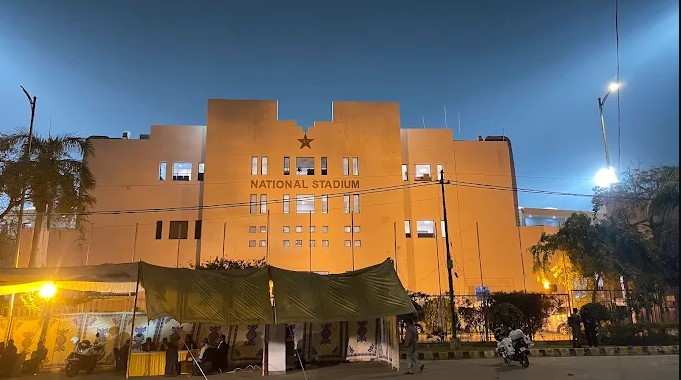The National Stadium Karachi (NSK), located in Pakistan’s bustling metropolis, is not just a historic cricket venue but also one of the most iconic stadiums in South Asia. With its vibrant history and modern upgrades, the stadium is often in the spotlight during major cricketing events. Among its key characteristics is the boundary length, which directly impacts the style of play, scoring patterns, and strategic planning.
Table of Contents
Quick Facts About National Stadium Karachi
| Feature | Detail |
|---|---|
| Location | Karachi, Sindh, Pakistan |
| Established | 1955 |
| Capacity | ~34,000 |
| Owner | Pakistan Cricket Board (PCB) |
| First Test Match | Pakistan vs. India, 1955 |
| First ODI Match | Pakistan vs. West Indies, 1980 |
| First T20I Match | Pakistan vs. West Indies, 2008 |
Understanding Boundary Lengths
In cricket, the boundary length refers to the distance from the center of the pitch to the perimeter fencing or rope. These lengths can vary depending on ground shape, safety regulations, and event requirements (ICC regulations specify minimum boundaries, but stadiums may exceed them).
National Stadium Karachi Boundary Dimensions
The NSK has a roughly oval shape, making the boundary distances vary in different directions.
| Direction | Average Boundary Length (meters) |
|---|---|
| Straight (North-South) | 72 – 78 m |
| Square (East-West) | 65 – 68 m |
| Fine Leg / Third Man | 60 – 64 m |
| Long On / Long Off | 70 – 75 m |
These measurements can slightly vary based on pitch placement and temporary configurations.
Why Boundary Length Matters
1. Impact on Scoring
Longer boundaries at NSK mean that power hitters need to clear more distance to score sixes, particularly down the ground. However, square boundaries being relatively shorter allow for easier fours and sixes on the offside and leg side, especially with cross-batted shots.
2. Bowler Strategy
Bowlers often use longer straight boundaries to their advantage, bowling fuller deliveries to force batters to hit down the ground, where the longer distance makes six-hitting more difficult.
3. Fielding Setup
Captains usually set deeper fields in the square regions and often protect the straight boundaries with tall fielders who can leap for catches, especially in limited-overs formats.
Comparison with Other Pakistani Grounds
| Stadium | Straight Boundary (m) | Square Boundary (m) |
|---|---|---|
| National Stadium Karachi | 72 – 78 | 65 – 68 |
| Gaddafi Stadium Lahore | 68 – 74 | 63 – 66 |
| Rawalpindi Cricket Stadium | 70 – 75 | 62 – 67 |
| Multan Cricket Stadium | 75 – 80 | 68 – 72 |
Historical Matches & Boundary Influence
The National Stadium Karachi has seen some epic battles where boundary size played a key role:
- Pakistan vs. Sri Lanka, 2009 (Test Match): A high-scoring draw where square boundaries were peppered with sweeps and cuts.
- PSL Matches: Batters like Babar Azam and Fakhar Zaman have mastered playing with NSK’s dimensions, often manipulating the field using smart placements rather than brute force.
- 2022 T20I Series vs England: Batters adapted to shorter square boundaries, while bowlers protected the straight ones.
Renovation and Safety
With modern renovations led by the PCB, boundary ropes at NSK have been brought inward slightly in some areas to accommodate media zones, digital ad boards, and player safety. Nonetheless, the ground still complies with ICC’s minimum requirements: 59.43 meters (65 yards) from the center of the pitch.
The boundary dimensions of National Stadium Karachi strike a fine balance between challenging bowlers and rewarding batters. Its strategic layout influences match outcomes significantly. Whether it’s Test matches or T20 thrillers, the boundary lengths shape both the tempo and tactics of cricket played here.
As the stadium continues to host international and domestic events, understanding its boundary dimensions becomes crucial for players, analysts, and fans alike.


